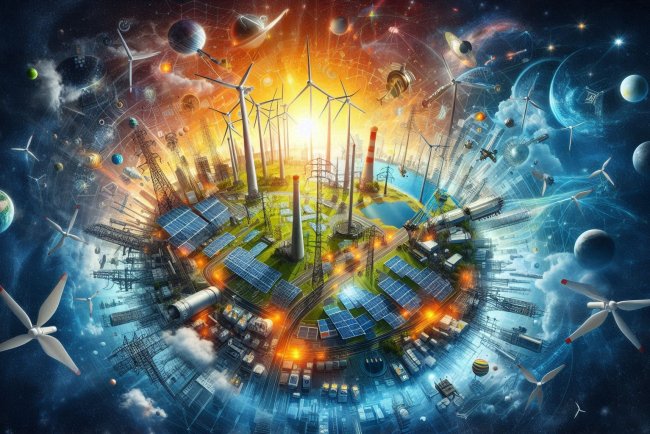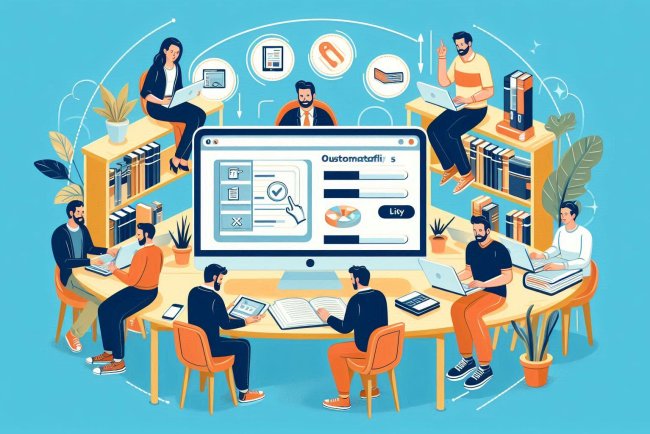The Role of Digital Twins in Renewable Energy Systems
Explore how digital twins are revolutionizing renewable energy systems, optimizing performance and increasing efficiency.

The Role of Digital Twins in Renewable Energy Systems
Digital twins are virtual replicas of physical assets, processes, and systems that enable monitoring, analysis, and optimization of their real-world counterparts. In the context of renewable energy systems, digital twins play a crucial role in enhancing operational efficiency, predictive maintenance, and overall performance.
1. Monitoring and Visualization
One of the key advantages of digital twins in renewable energy systems is their ability to provide real-time monitoring and visualization of various components such as solar panels, wind turbines, and energy storage systems. By collecting and analyzing data from sensors embedded in these assets, digital twins can offer insights into their performance, health status, and potential issues.
2. Predictive Maintenance
Digital twins enable predictive maintenance by using historical data and machine learning algorithms to anticipate equipment failures before they occur. This proactive approach helps renewable energy operators minimize downtime, reduce maintenance costs, and extend the lifespan of their assets.
3. Performance Optimization
By simulating different operating conditions and scenarios, digital twins allow operators to optimize the performance of renewable energy systems. They can identify opportunities for improving energy production, reducing energy losses, and enhancing overall system efficiency through data-driven insights and simulations.
4. Energy Forecasting
Digital twins can also be utilized for energy forecasting purposes, helping renewable energy operators better predict and manage energy generation and consumption. By integrating weather data, grid conditions, and historical performance data, digital twins can provide accurate forecasts that enable efficient energy planning and grid integration.
5. Integration with IoT and AI
Digital twins can be integrated with Internet of Things (IoT) devices and artificial intelligence (AI) technologies to further enhance their capabilities in renewable energy systems. IoT sensors can collect real-time data from assets, while AI algorithms can analyze this data to optimize operations, detect anomalies, and improve decision-making processes.
6. Virtual Testing and Simulation
Before implementing changes or upgrades to renewable energy systems, operators can use digital twins for virtual testing and simulation. This allows them to assess the impact of proposed changes, evaluate different scenarios, and make informed decisions without disrupting the actual operation of the systems.
7. Remote Monitoring and Control
Digital twins enable remote monitoring and control of renewable energy assets, providing operators with the flexibility to manage their systems from anywhere. This capability is particularly valuable for distributed energy resources and off-grid installations, where physical access may be limited or challenging.
8. Data-driven Decision Making
With the wealth of data collected and analyzed by digital twins, renewable energy operators can make data-driven decisions to optimize their systems and operations. By leveraging insights from digital twins, operators can identify trends, patterns, and opportunities for improvement that may not be apparent through traditional monitoring methods.
9. Scalability and Flexibility
Digital twins offer scalability and flexibility for renewable energy systems, allowing operators to easily expand, modify, or upgrade their assets as needed. By creating digital replicas of their assets, operators can experiment with different configurations, layouts, and technologies to find the most efficient and cost-effective solutions.
10. Environmental Impact Assessment
Digital twins can also be used for environmental impact assessments of renewable energy projects, helping operators understand and mitigate potential environmental risks. By simulating the operation of renewable energy systems and analyzing their interactions with the environment, operators can make informed decisions to minimize their ecological footprint.
Conclusion
Overall, digital twins play a critical role in optimizing the performance, efficiency, and sustainability of renewable energy systems. By providing real-time monitoring, predictive maintenance, performance optimization, and other valuable capabilities, digital twins empower operators to make data-driven decisions and maximize the benefits of renewable energy technologies.
What's Your Reaction?

















